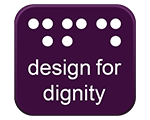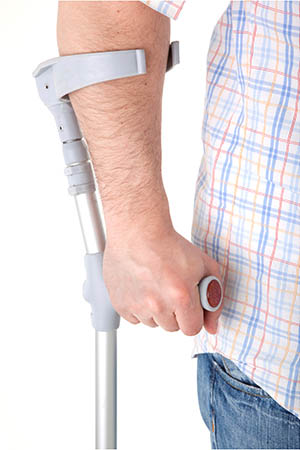Design For Dignity
Retail Guidelines




For each design, fixture, fitting or interaction in the retail experience, retailers and designers should ask the following questions to understand the accessibility of their design:

The following areas*Inclusive Design Toolkit, University of Cambridge, http://www.inclusivedesigntoolkit.com/betterdesign2/usercapabilities/usercap.html
Viewed September 2016 provide a useful framework for thinking about how every element of a design interacts with different human impairments:
Within each of these areas there is a range of human capability.
Hearing, for example, ranges from being able to hear nothing at all, to only being able to hear certain frequencies, to being able to hear clearly.
The property and service solutions for each part of this ‘spectrum’ vary. The intent of designing for dignity is to design in a way that seamlessly includes the greatest number of people.
The following table uses some of the capability descriptions from the University of Cambridge Inclusive Design toolkit as they give every day meaning to the challenges people face. The table also includes a couple of examples of design responses that increase the number of customers that are included by the design. (Much more detail is provided in the Premises section of this guidebook).
| Capability | High level (mainstream design) |
Medium level (includes more customers) |
Low level (includes most customers) |
|---|---|---|---|
| Vision | Full Vision | Cannot see well enough to read a newspaper headline.
Design response
|
Cannot tell by the light where the windows are.
Design response
|
| Hearing | Full hearing ability | Cannot hear a doorbell, alarm clock or telephone bell.
Design response
|
Cannot hear sounds at all.
Design response
|
Thinking*
|
Full thinking ability | Can do half the items in the footnote list.
Design response
|
Cannot do any of the items in the footnote list.
Design response
|
| Communication | Full communication ability | Is very difficult for strangers to understand. Is quite difficult for people who know them well to understand. Finds it difficult to understand strangers. Finds it quite difficult to understand people who know them well.
Design response
|
Is impossible for people who know him/her well to understand. Finds it impossible to understand people who know him/her well.
Design response
|
| Locomotion | Full mobility | Cannot bend down and pick up something from the floor and straighten up again. Can't walk long distances.
Design response
|
Cannot walk at all.
Design response
|
| Reach and stretch | Full reach & stretch ability | Has difficulty putting either arm up to head to put a hat on.
Design response
|
Cannot hold out either arm in front to shake hands.
Design response
|
| Dexterity | Full dexterity ability | Has difficulty unscrewing the lid of a coffee jar or using a pen and pencil.
Design response
|
Cannot pick up and hold a mug of coffee with either hand.
Design response
|
Design to include more people with impairments in these areas increases access, inclusion and a retailer's customer base. It can also reduce the likelihood of discrimination claims.